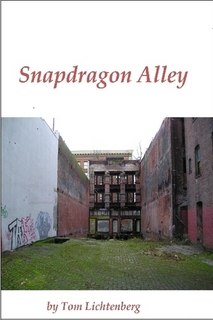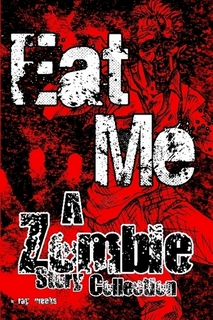 Tom Lichtenberg writes curiously engaging novellas. His stories are not driven by action but by mood and metaphysics. His premises often begin with fairly standard, often vaguely science-fiction concepts: time travel in Time Zone, for example, or mind control in World Weary Avengers. But he spins those concepts out into melancholy, thoughtful tales.
Tom Lichtenberg writes curiously engaging novellas. His stories are not driven by action but by mood and metaphysics. His premises often begin with fairly standard, often vaguely science-fiction concepts: time travel in Time Zone, for example, or mind control in World Weary Avengers. But he spins those concepts out into melancholy, thoughtful tales. Lichtenberg cares little about the mechanics of the MacGuffins that underlie his stories. Rather, he explores the emotion and (often) dislocation that people feel when confronted by something outside their normal experience. In Somebody Somewhere that "something" is as commonplace (relatively speaking) as a kidnapping and hostage situation; in Time Zone, as noted above, the "something" is as vast an incomprehensible as travel through time. Lichtenberg's characters may adapt to the situation or ignore it, or become totally overwhelmed; but the true story is always in those emotions and responses, rather than the rote turnings of some formulaic plot device. Although Lichtenberg's spare, quiet style could not be more different than H.P. Lovecraft's ornate verbal extravagance, the two share a conceptual interest in exploring how people respond when conventional reality is stripped away.
Lichtenberg's prose in some of his novellas ranges pretty far into the experimental; although I have enjoyed some of these, my admitted preference is for those works that hew a bit closer to a traditional narrative style. My favorite thus far is Snapdragon Alley, the story of young friends who discover a vacant lot at the end of a bus line that, perhaps, is more than it seems.
Lichtenberg's "launching point" for Snapdragon Alley is nothing new (Lichtenberg himself gives away in his back-cover blurb that, in investigating the lot, the children "encounter the possibility of" a gateway to "another dimension"). Nor, despite some interesting narrative quirks along the way, are the bare facts of how the story plays out particularly novel. But Lichtenberg captures beautifully the poetry of what such a gateway might mean to the people who stumble across it, and the emotions it might inspire. There are no loud explosions in Snapdragon Alley, or, indeed, very much overt action at all. But the novella, like much of Lichtenberg's writing, inspires an appreciation of just how vast, mysterious and majestic "reality" is, and that is both a far tougher task and a greater triumph.
Lichtenberg recently made several of his novellas (including Snapdragon Alley and all of the others mentioned above) available for free on Smashwords. (He also maintains a complete index of all of his works, including a link for free webpage reading of each and additional links for download sources, here.) Beyond Snapdragon Alley, other recommendations include Orange Car With Stripes (described by Lichtenberg as an "atheist science fiction comedy," as good a description as any) and, on the slightly more experimental side, the aforementioned Time Zone. However, all of Lichtenberg's novellas are quick reads and well worth checking out.
 In a
In a  The Fence Mender is an enjoyable if not revolutionary addition to the zombie genre. Decades ago, mankind faced an apocalyptic infestation of parasites that transformed people into murderous, cannibalistic automatons (i.e., zombies). Now, a small number of urban enclaves are the last bastions of civilization, each protected by a metal-mesh protective fence that keeps the zombies out. (Why no one ever built a concrete wall is never explored.)
The Fence Mender is an enjoyable if not revolutionary addition to the zombie genre. Decades ago, mankind faced an apocalyptic infestation of parasites that transformed people into murderous, cannibalistic automatons (i.e., zombies). Now, a small number of urban enclaves are the last bastions of civilization, each protected by a metal-mesh protective fence that keeps the zombies out. (Why no one ever built a concrete wall is never explored.)